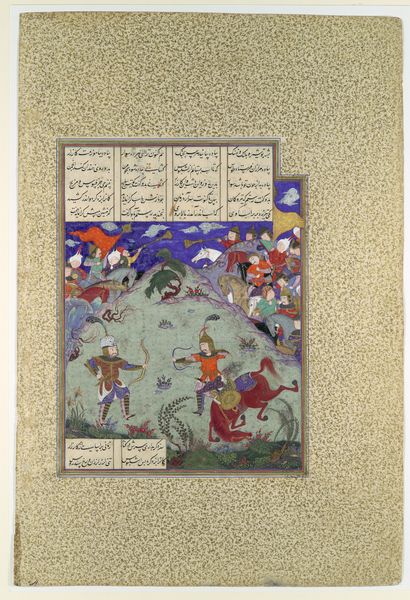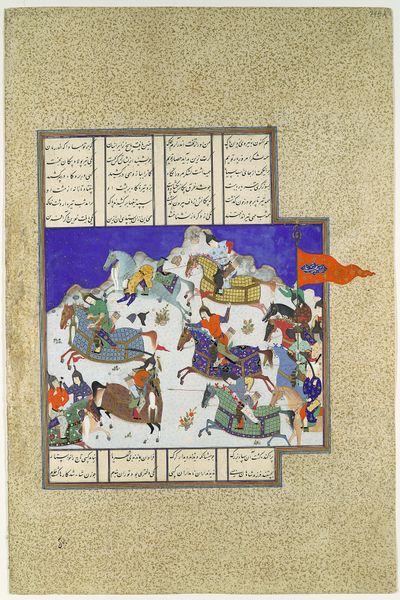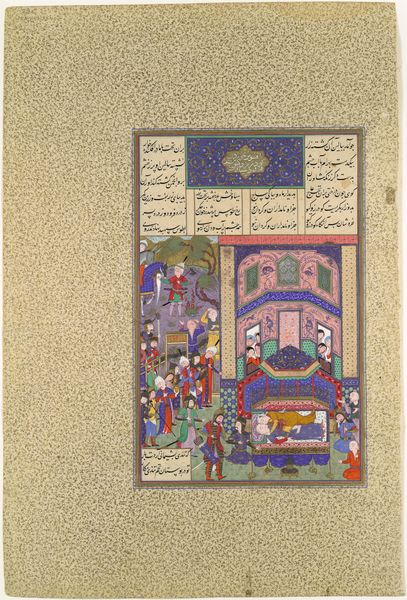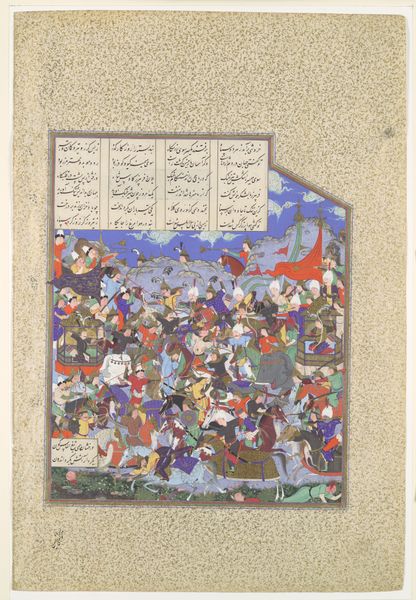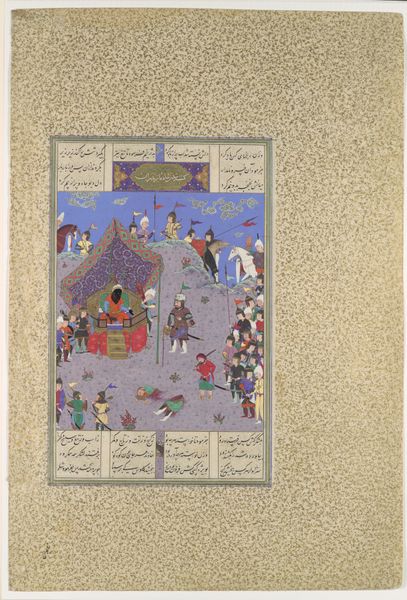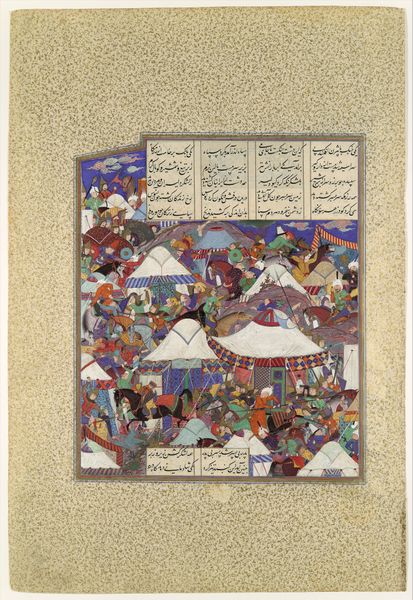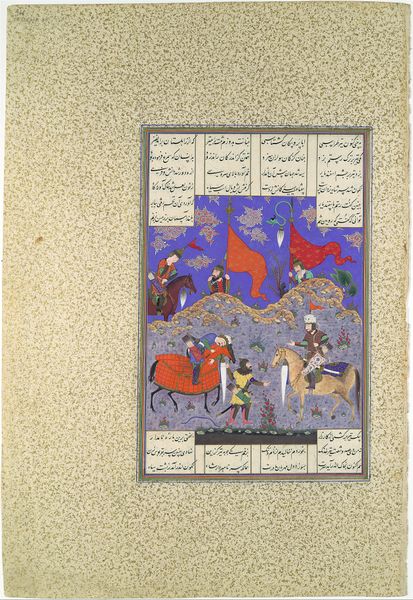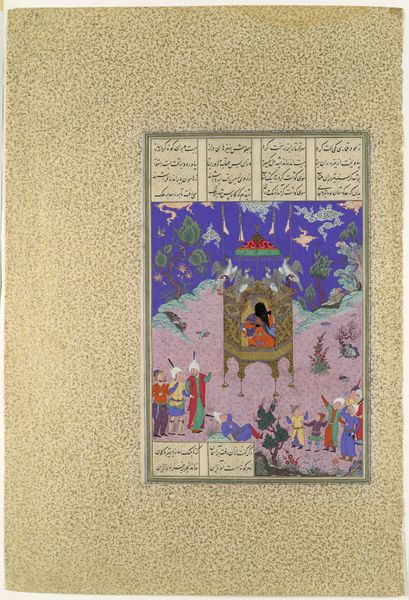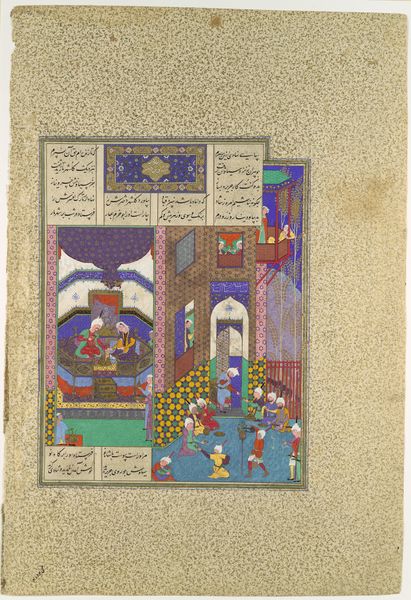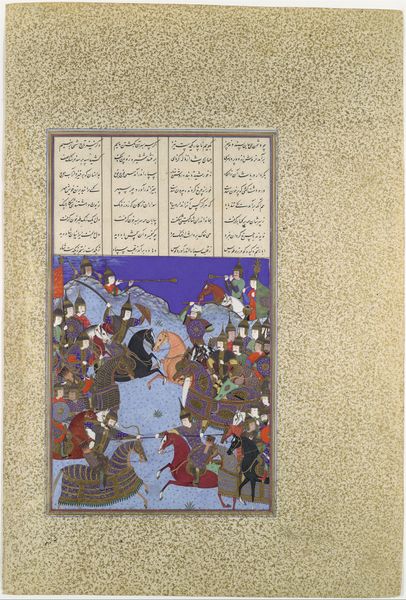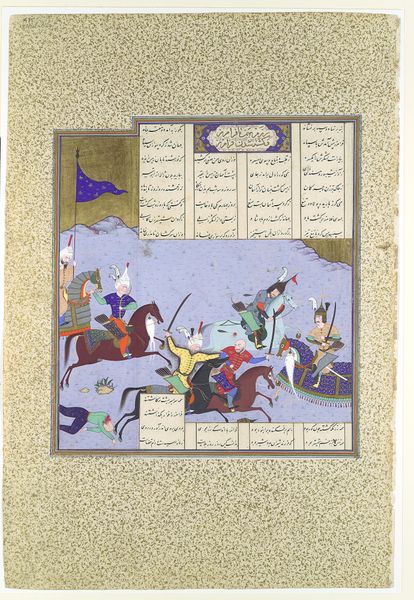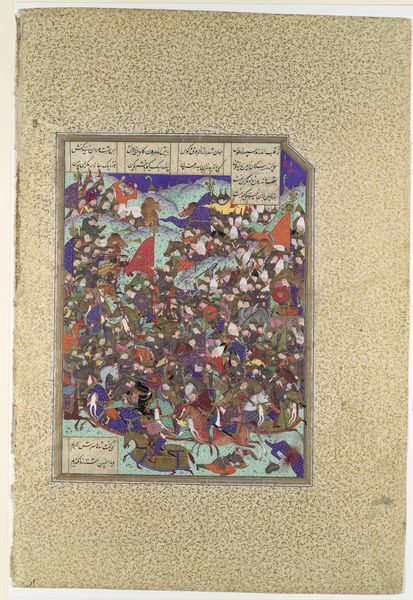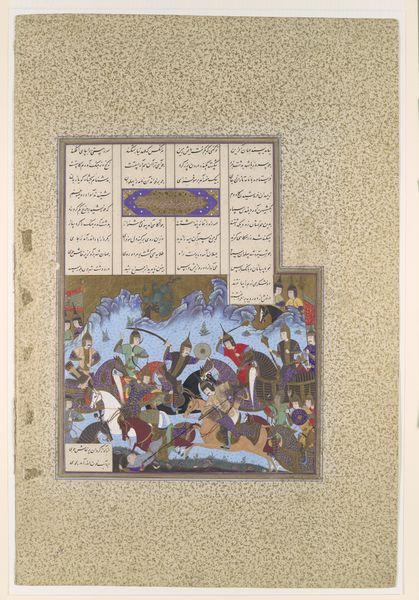
"Surkha Captured by Faramarz is Condemned by Rustam", Folio 204v from the Shahnama (Book of Kings) of Shah Tahmasp 1500 - 1555
0:00
0:00
painting, watercolor
#
narrative-art
#
painting
#
death
#
asian-art
#
watercolor
#
coloured pencil
#
horse
#
men
#
islamic-art
#
miniature
Dimensions: Painting: H. 11 3/16 in. (28.4 cm) W. 8 7/8 in. (22.5 cm) Page: H. 18 5/8 in. (47.3 cm) W. 12 5/8 in. (32.1 cm) Mat: H. 22 in. (55.9 cm) W. 16 in. (40.6 cm)
Copyright: Public Domain
This painting, "Surkha Captured by Faramarz is Condemned by Rustam," is a page from the Shahnama, or Book of Kings, made in Persia, now Iran. The book was created sometime between 1520 and 1540. It illustrates the epic poem by Abu'l Qasim Firdausi. Here, we see a dynamic battle scene, full of warriors on horseback amidst a rocky landscape. This work encapsulates the values of its time, where courtly patronage and the celebration of Persian identity were intertwined. The Shahnama itself served as a powerful symbol of Persian heritage, commissioned by rulers seeking to legitimize their authority through connections to a glorious past. The institutional context of the royal workshop, where skilled artists collaborated, shaped the creation of this and similar lavish manuscripts. Analyzing such a work calls for delving into the socio-political landscape of 16th-century Persia, exploring the dynamics of royal patronage, artistic collaboration, and the construction of national identity through literature and art. This allows a deeper understanding of the public role of art.
Comments
No comments
Be the first to comment and join the conversation on the ultimate creative platform.
